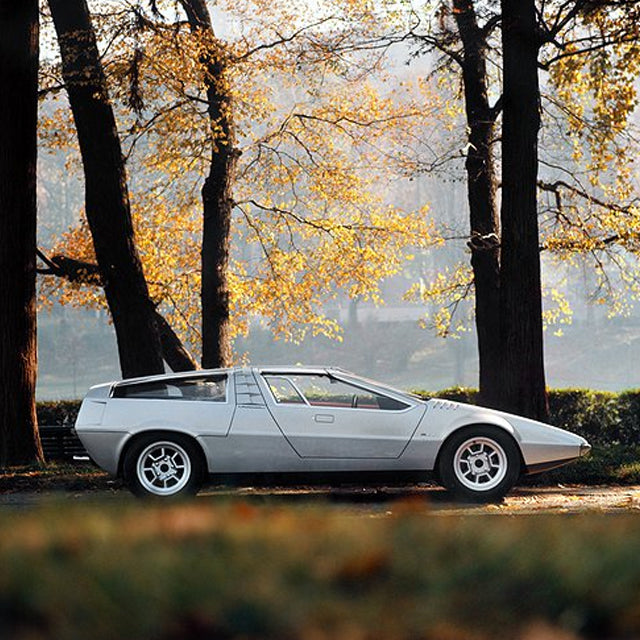Here are our five favorites from Italdesign Giugiaro’s back catalogue.

1968 Bizzarrini Manta by Italdesign
Yes, Marcello Gandini of Bertone (and the Alfa Romeo Carabo) introduced the first wedge’d supercar concept at Salon de l'Automobile in 1968, while Giugiaro’s Bizzarini Manta waited until later in the year at Turin for its debut. Why? Giugiaro had only founded the company in February of that year! Designed and built in forty days around an Iso Grifo chassis and powered by a Chevrolet V8, it still moves under its own power.While not a wedge in the most strict sense, it signaled the start of his long affair with modifying a wedge to suit the design job. (The Alfa Romeo Iguana by Italdesign is the ‘missing link’ in many respects between the Manta and our next selection…)

1970 Porsche Tapiro by Italdesign
Those of you with a Porsche 914 already know about this car, and very likely wish that this body was what the car left the factory with—but, of course, imagine how much more the car would have cost in period!One of our favorite “what ifs”, the one and only Tapiro was severely damaged in a fire, but we can just imagine a production version of the car rubbing shoulders with the (Ferrari) Dino 206 GT and 246 GT at auction. For what it’s worth, Italdesign refers to the car as its first “official” wedge-shaped car.

1970 Maserati Boomerang by Italdesign
Shown three years after the Tapiro, by 1970, the famously hard-working Giugiaro had already shown a number of wedges after the Tapiro but the 1973 Boomerang was his next evolution of the theme: an extreme take on an angular supercar.Based on the Maserati Bora and powered by a 310 horsepower V8 engine and “capable of” 186 mph (300 km/h), the Boomerang used just about every design trick in the book to make its extreme 13º windshield angle (two degrees less than on the Manta) work—but, of course it did.

1975 Lotus Esprit by Italdesign
One of the world’s first production wedge-shaped cars, it arrived two years after the Lancia Stratos but is a design more dedicated to a wholly angular shape. Fitting perfectly with Colin Chapman and Lotus F1’s on-track successes, the small displacement 2.0-litre, 4-cylinder powered road-going Esprit was every bit an equal to many higher-powered ’70s sports cars.Windshield angle? Eighteen degrees, about the same as the Manta—and that means it took less than a decade for Giugiaro’s wedge shapes to enter production.

1976 Alfa Romeo New York Taxi by Italdesign
Responding to a challenge by MoMa’s open challenge to design a taxi of tomorrow, Italdesign’s approach was to take its sexy wedge lines and create one of the few Alfa Romeos with sliding doors that we’d actually want to drive. Built around the company’s F12 van platform, it was given an interior makeover that used a steeply raked windshield and barely-there hood to maximize passenger space. In other words, it took less than a decade for Giugiaro to make the wedge wheelchair accessible.Image Source:italdesign.it




















































